Juniper JN0-363 Service Provider Routing and Switching, Specialist (JNCIS-SP) Exam Practice Test
Service Provider Routing and Switching, Specialist (JNCIS-SP) Questions and Answers
You want to share routes between two routing instances that you have configured?
What are two ways to accomplish this task? (Choose two.)
Which LSA type does an OSPF ABR use to advertise external routes generated by an NSSAASBR into the backbone?
Which BGP attribute Is used to detect touting loops?
Exhibit
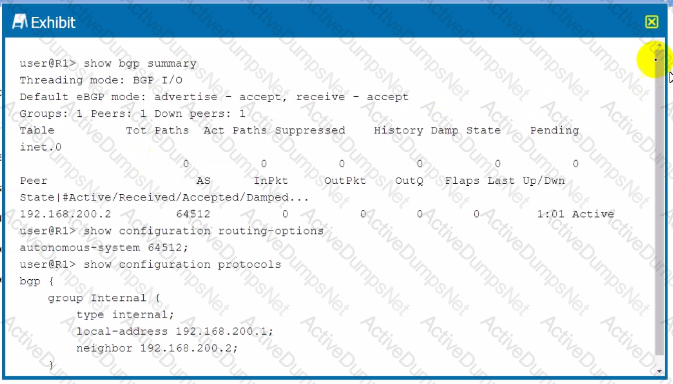
Referring to the exhibit, internal BGP between R1 and R2 is not establishing.
What is the problem In this scenario?
Exhibit
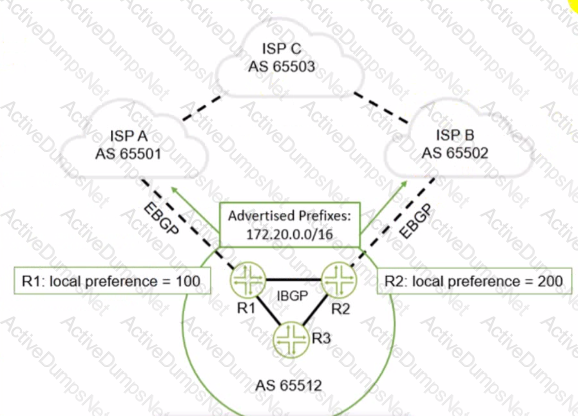
You are advertising a summary route that represents your local network (172.20.0.0716) to both ISP A and ISPB. You want to influence all traffic sent to you from ISP C to go through R2.
How would you accomplish this task?
How does a Junos device learn about MAC addresses when II is first connected to an Ethernet LAN?
Exhibit
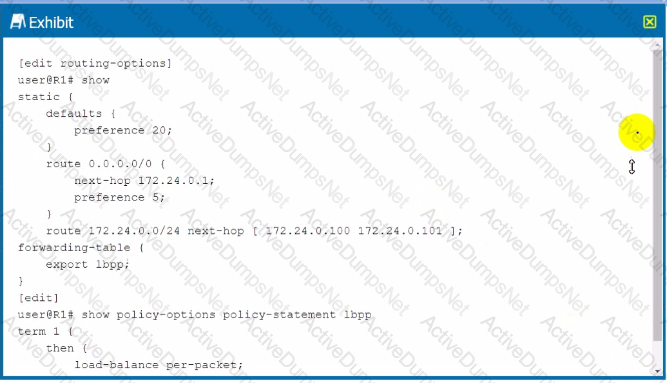
Which type of load balancing is shown in the exhibit?
Which two statements are correct when using LDP? (Choose two.)
You want to enable a routing platform with redundant REs to switch from a primary RE to a backup RE without alerting peer nodes. Which two technologies would you use to satisfy this requirement? (Choose two.)
What are three well-known mandatory BGP attributes? (Choose three.)
You are asked to create connections between routing instances on the same Junos device and route between the connected Instances. What are two ways to accomplish this task? (Choose two.)
The segment touting SRGB start label Is 10,000 and the SRGB index range is 500.
In this scenario, which two statements are correct? (Choose two.)
You want to see a detailed list of all established BGP sessions. In this scenario, what would be a valid command to accomplish this task?
By default, which two statements are correct about switch ports on a Junos device? (Choose two.)
Which two protocols are capable of distributing labels for segment routing? (Choose two.)
Exhibit
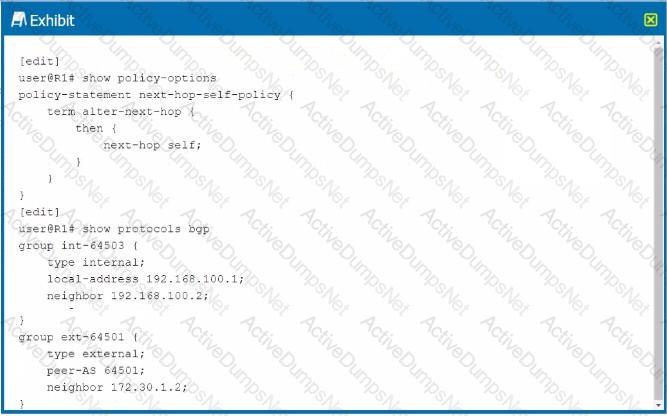
Referring to the exhibit, where should next-hop-self-policy be applied to alter the next-hop value?
You are asked to configure an LSP which uses the OSPF link state database for path computations. Which two statements are correct in this scenario? (Choose two.)
Exhibit
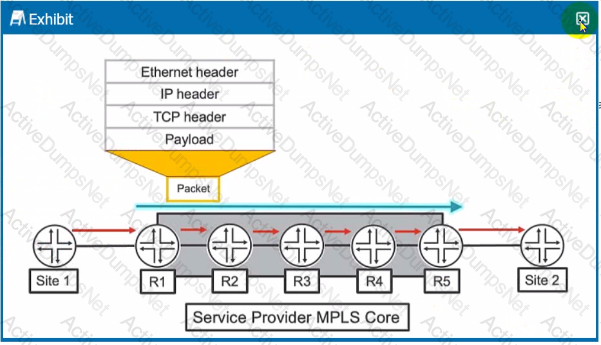
Which two statements ate correct about the actions taken as the packet traverses the service provider MPLS network from Site 1 to Site 2 as shown in the exhibit? (Choose two.)
Exhibit
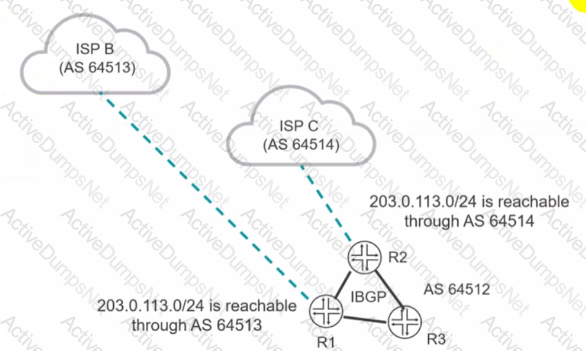
You want the R1 and R3 routers to forward traffic destined to the 203.0.113.0/24 network through R2. Which BGP attribute would you modify to satisfy this requirement?
Click the Exhibit button.

Referring to the exhibit, you have an established RSVP LSP between R1 and R4 when you experience a link failure between R2 and R3.
Which two statements are correct? (Choose two.)
Which two interface types are used as tunnel endpoints? (Choose two.)
Which two statements ate correct about the BGP next-hop attribute value? (Choose two.)
What are three types of MPLS routers? (Choose three.)
When would you use the qualified-next-hop statement with a static route?
Which statement is correct about the FE80;:/10 prefix?
